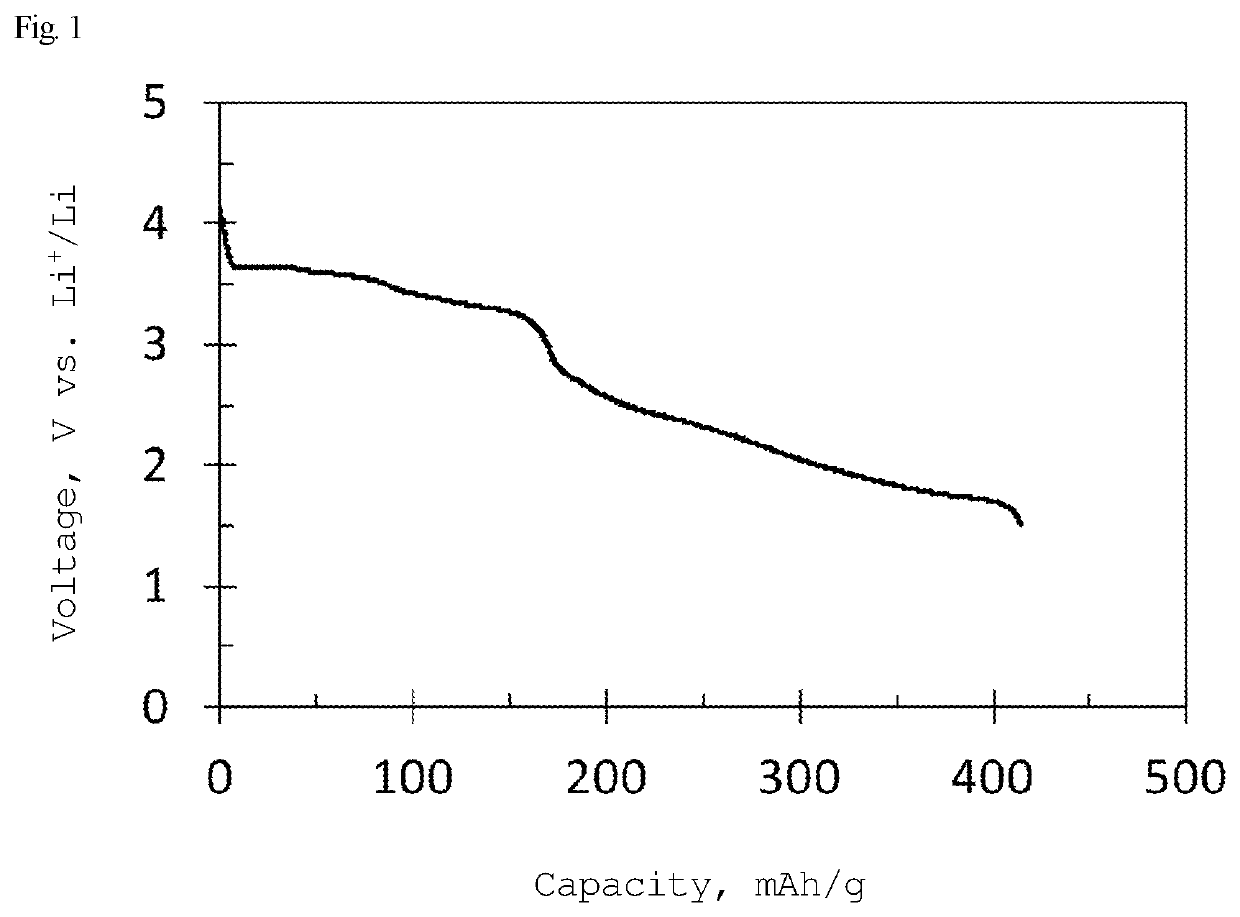Electrode active material for nonaqueous secondary batteries, and nonaqueous secondary battery using same
- Summary
- Abstract
- Description
- Claims
- Application Information
AI Technical Summary
Benefits of technology
Problems solved by technology
Method used
Image
Examples
example 1
[0068]1,4,8,11-Tetrahydroxy dibenzo[b,i]thianthrene-5,7,12,14-tetrone tetralithium salt (1) was synthesized through the following route. First, 0.93 g of 2,3-dichloro-5,8-dihydroxy-1,4-naphthoquinone was dissolved in 24 mL of acetic anhydride, and refluxed for 8 hours. After cooling, the precipitate was filtered, thereby obtaining 0.92 g of 5,8-diacetoxy-2,3-dichloro-1,4-naphthoquinone. 0.85 g of the synthesized 5,8-diacetoxy-2,3-dichloro-1,4-naphthoquinone and 0.17 g of rubeanic acid were dissolved in 13 mL of dimethylformamide, and then 1 mL of triethylamine was added thereto, followed by stirring at 50° C. for 10 hours. After cooling, the precipitate was filtered, and washed with water, thereby obtaining 0.72 g of 1,4,8,11-tetraacetoxy dibenzo[b,i]thianthrene-5,7,12,14-tetrone. Thereafter, 0.64 g of the obtained solid was dissolved in a lithium hydroxide solution, and stirred at room temperature for 2 hours. After evaporation of the solvent, the residue was washed with ethanol, t...
PUM
 Login to View More
Login to View More Abstract
Description
Claims
Application Information
 Login to View More
Login to View More - R&D
- Intellectual Property
- Life Sciences
- Materials
- Tech Scout
- Unparalleled Data Quality
- Higher Quality Content
- 60% Fewer Hallucinations
Browse by: Latest US Patents, China's latest patents, Technical Efficacy Thesaurus, Application Domain, Technology Topic, Popular Technical Reports.
© 2025 PatSnap. All rights reserved.Legal|Privacy policy|Modern Slavery Act Transparency Statement|Sitemap|About US| Contact US: help@patsnap.com



